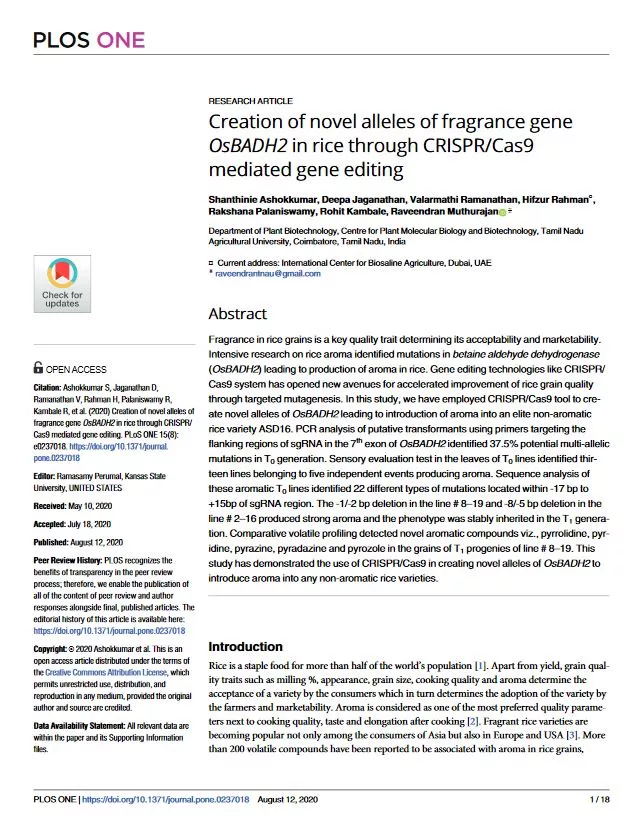Creation of novel alleles of fragrance gene OsBADH2 in rice through CRISPR/Cas9 mediated gene editing
Fragrance in rice grains is a key quality trait determining its acceptability and marketability. Intensive research on rice aroma identified mutations in betaine aldehyde dehydrogenase (OsBADH2) leading to production of aroma in rice. Gene editing technologies like CRISPR/Cas9 system has opened new avenues for accelerated improvement of rice grain quality through targeted mutagenesis. In this study, we have employed CRISPR/Cas9 tool to create novel alleles of OsBADH2 leading to introduction of aroma into an elite non-aromatic rice variety ASD16. PCR analysis of putative transformants using primers targeting the flanking regions of sgRNA in the 7th exon of OsBADH2 identified 37.5% potential multi-allelic mutations in T0 generation. Sensory evaluation test in the leaves of T0 lines identified thirteen lines belonging to five independent events producing aroma. Sequence analysis of these aromatic T0 lines identified 22 different types of mutations located within -17 bp to +15bp of sgRNA region. The -1/-2 bp deletion in the line # 8–19 and -8/-5 bp deletion in the line # 2–16 produced strong aroma and the phenotype was stably inherited in the T1 generation. Comparative volatile profiling detected novel aromatic compounds viz., pyrrolidine, pyridine, pyrazine, pyradazine and pyrozole in the grains of T1 progenies of line # 8–19. This study has demonstrated the use of CRISPR/Cas9 in creating novel alleles of OsBADH2 to introduce aroma into any non-aromatic rice varieties.
Year
2020
Publication Source
Plos
Publication type
Scientific Paper
Volume/Chapter/Issue
15











